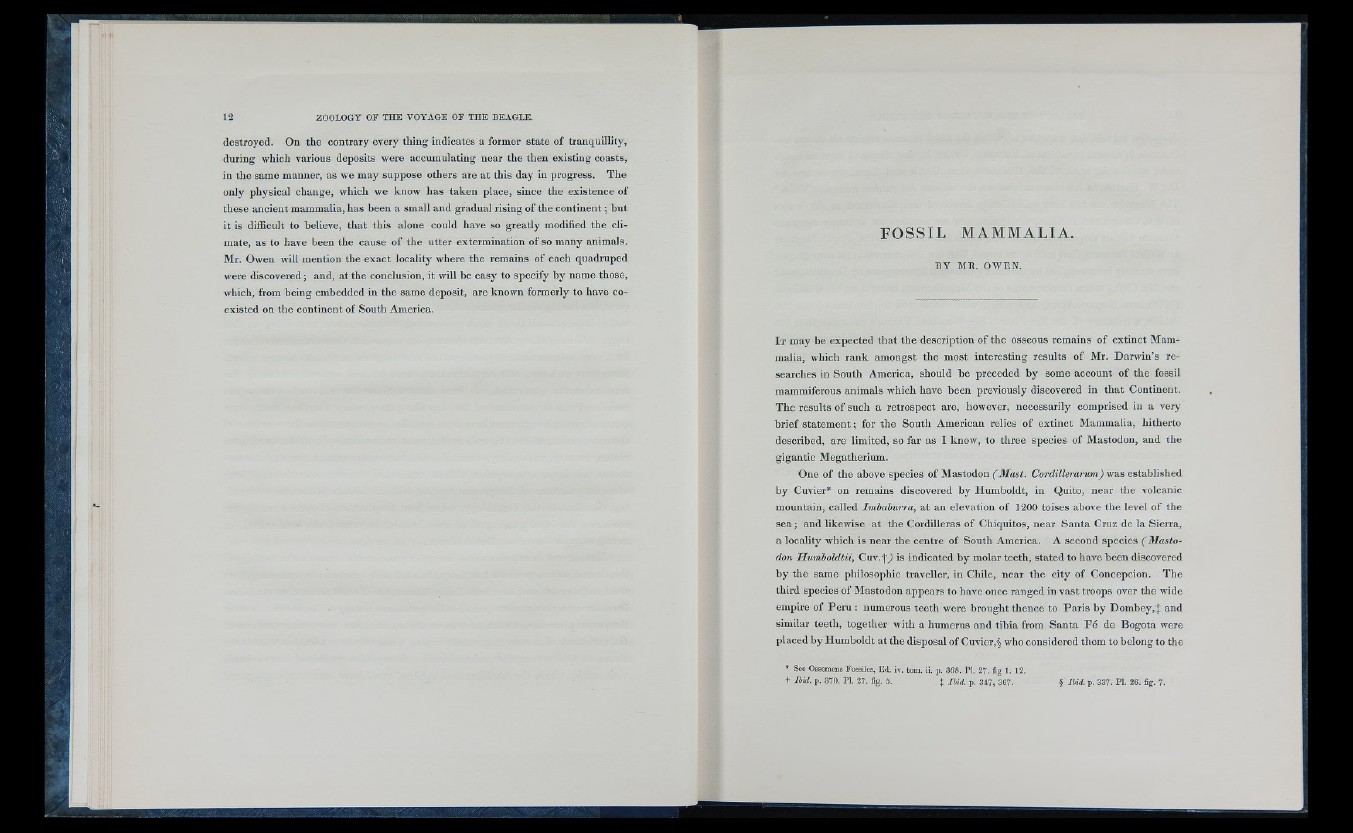
destroyed. On the contrary every thing indicates a former state o f tranquillity,
during which various deposits were accumulating near the then existing coasts,
in the same manner, as we may suppose others are at this day in progress. The
only physical change, which we know has taken place, since the existence o f
these ancient mammalia, has been a small and gradual rising o f the con tin en t; but
it is difficult to believe, that this alone could have so greatly modified the climate,
as to have been the cause o f the utter extermination o f so many animals.
Mr. Owen will mention the ex a c t locality where the remains o f each quadruped
were discovered; and, at the conclusion, it will be ea sy to specify by name those,
which, from being embedded in the same deposit, are known formerly to have coexisted
on the continent o f South America.
FOS S IL MAMMALIA.
B Y M R . O W E N .
I t may be expected that the description o f the osseous remains o f extinct Mammalia,
which rank amongst the most interesting results o f Mr. Darwin’s researches
in South America, should be preceded by some account o f the fossil
mammiferous animals which have been previously discovered in that Continent.
The results o f such a retrospect are, however, necessarily comprised in a very
brief sta tem en t; for the South American relics o f ex tinc t Mammalia, hitherto
described, are limited, so far as I know, to three spe cie s o f Mastodon, and the
gigantic Megatherium.
One o f the above species of Mastodon f M a st. Cordillerarum) was established
by Cuvier* on remains discovered by Humboldt, in Quito, near the volcanic
mountain, called Imhahurra, at an elevation o f 1200 toises above the level o f the
s e a ; and likewise at the Cordilleras o f Chiquitos, near Santa Cruz de la Sierra,
a locality which is near the centre o f South America. A second spe cie s (M a sto don
Humboldtii, C uv .f) is indicated by molar teeth, stated to have been discovered
b y the same philosophic traveller, in Chile, near the c ity of Concepcion. The
third species o f Mastodon appears to have once ranged in vast troops over the wide
empire o f Peru : numerous teeth were brought thence to Paris b y Dombey,^; and
similar teeth, together with a humeiTis and tibia from Santa F e de Bogota were
placed by Humboldt at the disposal o f Cuvier,§ who considered them to belong to the
* See Ossemcna Fossiles, Ed. iv. tom. ii. p. 368. PL 27. fig 1. 12.
t Ibid. p. 370. Pl. 27. fig. 5. X Ibid. p. 347, 367. § Ibid. p. 337. Pl. 26. fig. 7.